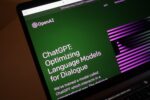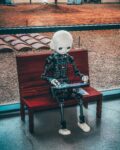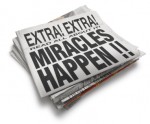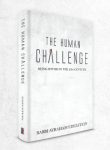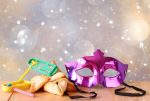
Michael Cohen is the Director of Technology at Harkham Hillel Hebrew Academy, a Los Angeles-based Modern Orthodox Jewish Day School, where he empowers faculty and students to utilize technology to achieve their goals in a creative and engaging fashion. He has taught Graphic Design at the Fashion Institute for Design & Merchandising (FIDM). You can read his blog at thetechrabbi.wordpress.com and follow him on Twitter @TheTechRabbi.
Michael Cohen received his B.F.A. in Fine Arts and Graphic Design at California State University Long Beach. He is currently enrolled in a Rabbinical Certification Program, taught by Rabbi Nachman Wilhelm, and ordination given by Rabbi Dovid Shochet, President of the Orthodox Rabbinate of Toronto. His program is set to graduate in early 2014. His hobbies include learning Torah, Art, Photography and Hiking.
The Alter Rebbe, the first Rebbe of the Chabad-Lubavitch movemment said,
“We must live with the times.”
Living with the times means to live with the Torah portion of the week, and that the daily Torah portion should be learned in a way that we can live with its message.
In my current position as the Director of Technology at a Jewish Day School, I play a sort of double identity. While I have a full beard and fit the Rabbi look to a tee, I am not a Mishnah Rebbe. Rather, I am considered a part of the “secular” education department.
“This has to change.”
In Devarim 1:13 (Deuteronomy), Moshe tells the Jewish people that he looked for
” אֲנָשִׁים חֲכָמִים וּנְבֹנִים וִידֻעִים לְשִׁבְטֵיכֶם וַאֲשִׂימֵם בְּרָאשֵׁיכֶם”
“Men of wisdom and understanding, who are known, to be heads of the tribes”
Rashi says that he looked for righteous men of wisdom who are well known, but “understanding” men he could not find.
Understanding (hebrew: Binah) is the ability to take an abstract concept and apply it to many different areas. This is crucial in education regardless of subject or grade level. This level of understanding can be achieved by students by not just integrating technology into their learning, but integrating the learning itself.
In the “real world” we do not break down our experiences by subject or curriculum. At any given time, the skills gained in math, English, science, and Torah coalesce. No one is saying,
“Ok, now I am using the skills I learned in English.”
You simply speak or write in a way that reflects your skills and abilities. It is an almost thoughtless exercise. Yet, in school we break everything down into subject, class, grade. You name it and it is categorized. Now I am not in any way demanding that we abandon the system entirely. There is something to be said about hiring an educator who is highly skilled in their area to teach kids a topic at a level that they can comprehend. I am questioning the reason behind
“enclosing each subject in a 30 foot brick wall topped with barbed wire while rabid dogs circle the perimeter.”
The STEM (Science, Technology, English, and Math) method of learning successfully breaks down these walls and there is nothing stopping Judaic studies from doing the same with JTM (Judaic Studies, Technology and Math), except a catchy acronym.
A good math teacher can teach math regardless of the content. This means that if you show a math teacher that an “Amah” (Biblical measurement) comes out to around 20 inches, then a Judaic Studies teacher and a math teacher can create a project where the students learn geometry (i.e., the concept of area) while finding the measurements for the Mishkan or the Beis Hamikdash. Technology can be integrated into the project via Gamification by using the game Minecraft™ to create a to scale 3D model of the Beis Hamikdash, or use Google Sketch Up™ instead.
The students have now learned more than just concepts from Torah and math and the slew of positive results from Project Based Learning. They have learned that math and Torah are both relevant. They have discovered that their learning experience is not limited to a subject or class, but that all subjects connect to one another.
Projects like these unite teachers and students and learning in a revolutionary way. Students crave knowledge as much as Angry Birds™ as long as they feel it’s relevant. By showing students that they can learn math with Mishnah, Chumash with creative writing, and Halacha with hydrochloric ccid, then students will feel that all the learning is united, and most of all, relevant.





